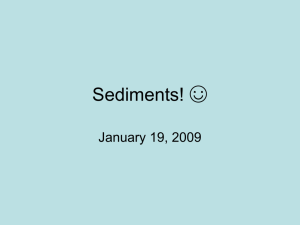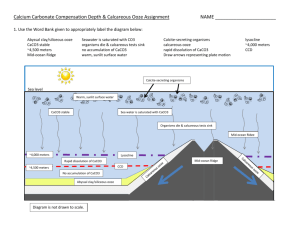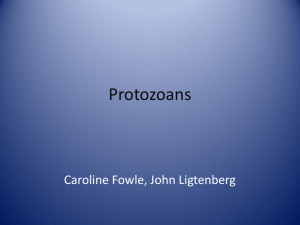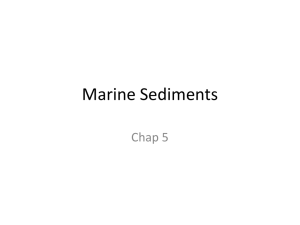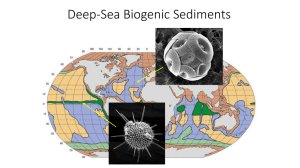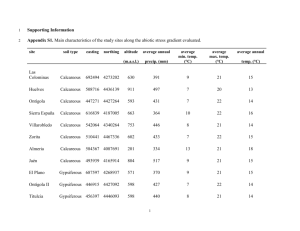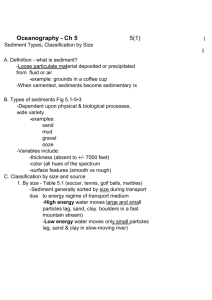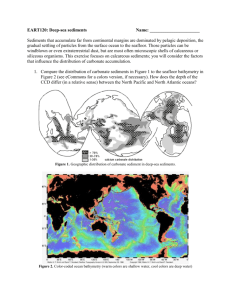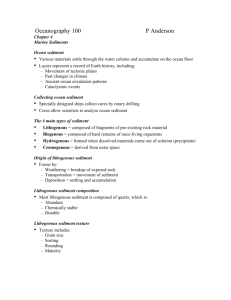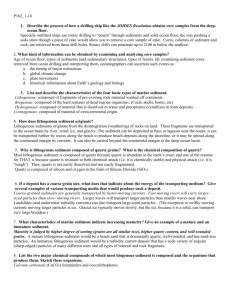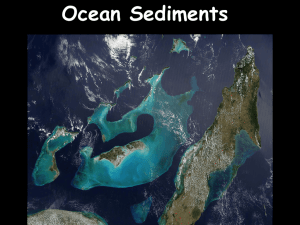Calcium Carbonate Compensation Depth
advertisement
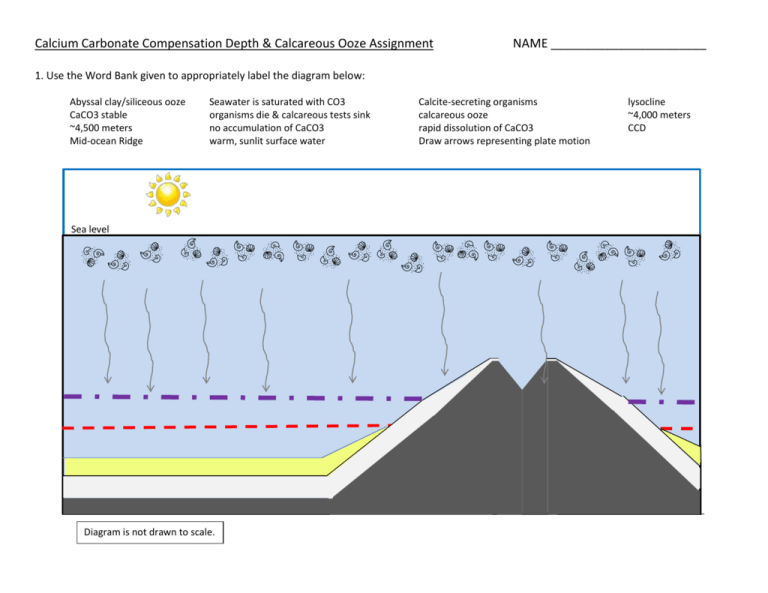
Calcium Carbonate Compensation Depth & Calcareous Ooze Assignment NAME _______________________ 1. Use the Word Bank given to appropriately label the diagram below: Abyssal clay/siliceous ooze CaCO3 stable ~4,500 meters Mid-ocean Ridge Seawater is saturated with CO3 organisms die & calcareous tests sink no accumulation of CaCO3 warm, sunlit surface water Sea level Diagram is not drawn to scale. Calcite-secreting organisms calcareous ooze rapid dissolution of CaCO3 Draw arrows representing plate motion lysocline ~4,000 meters CCD 2. Define the term ‘calcium carbonate compensation depth’. What is the average depth of the CCD, in meters & in feet? 3. Describe the different conditions that cause CaCO3 to dissolve. Include the chemical reaction for the dissolution of calcium carbonate. 4. As the calcareous tests sink, does the dissolution occur gradually with depth or suddenly once the CCD is reached? Explain. 5. Define ‘calcareous ooze’. List the two main types of organisms that contribute to this biogenous sediment. 6. Calcareous oozes can be found in sediment cores drilled from locations in waters deeper than the CCD. Explain how this occurs with regards to plate tectonics and deposition of sediment. 7. Where can a high percentage of calcareous ooze be found in modern ocean sediments around the globe? Explain why this occurs. 8. If you were vacationing on a cruise ship and the captain informed you that your current position was over the Juan de Fuca Ridge at 46o N latitude, would you expect calcareous ooze to be accumulating? Why or why not?
